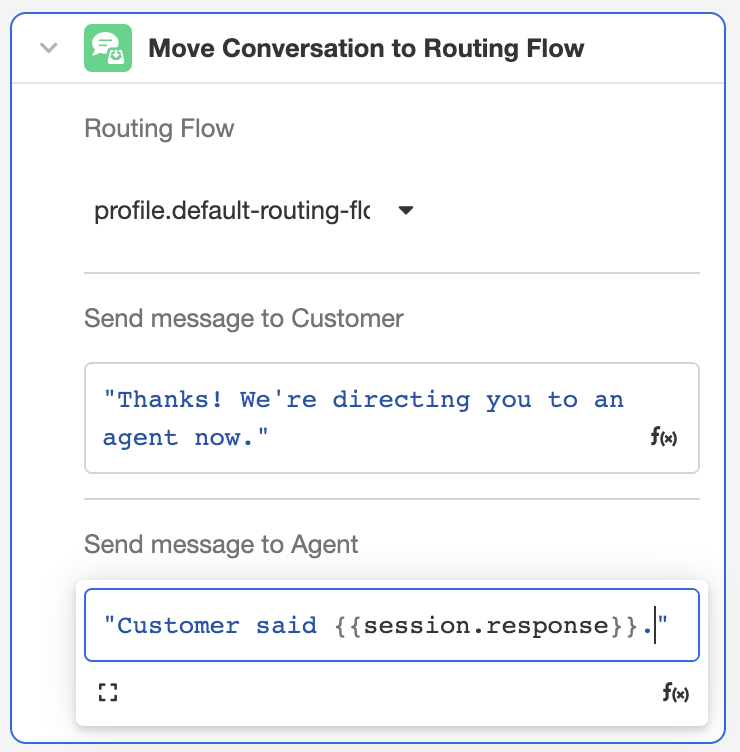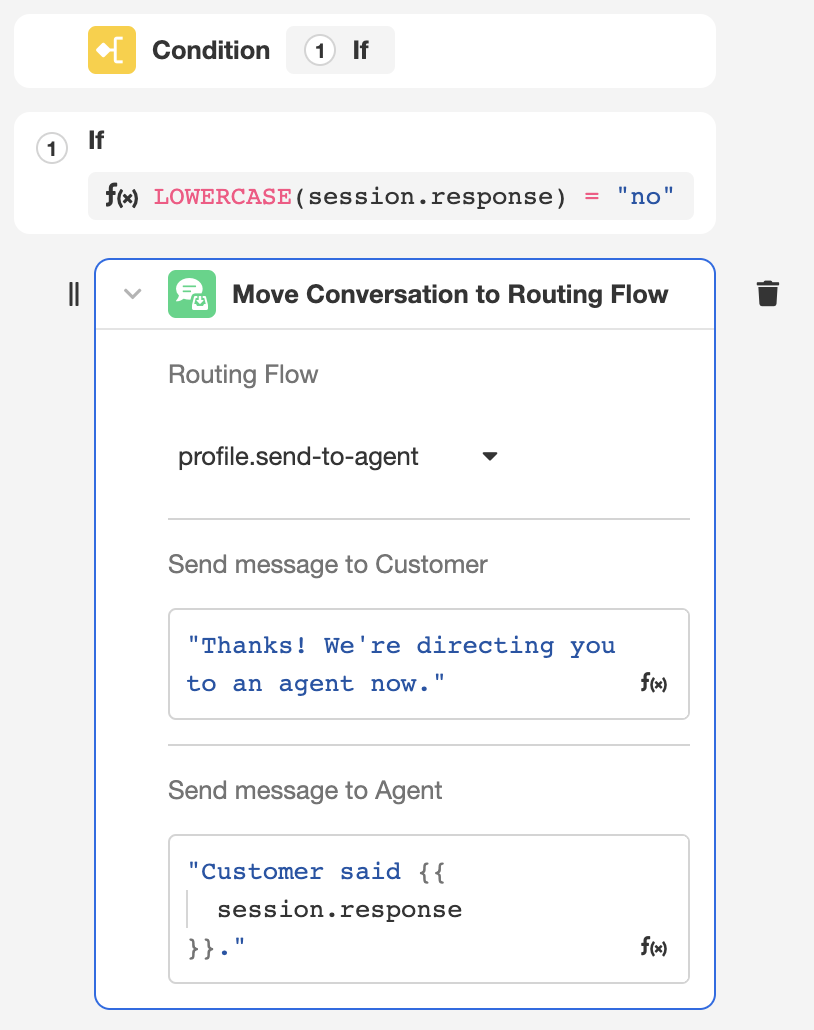
The Move Conversation to Routing Flow Action is used to direct users to a Routing Flow as part of a Conversation Chat Bot.
Routing Flows determine where incoming user messages will be sent and how they will be responded to. The three fundamental types of Routing Flows are:
- Bots, which process user messages and send responses based on the automatic chat logic flow defined by Answer Flows
- Agents, which send user messages to human beings who work in a call center and allows them to craft custom responses
- Relays, which send user messages to be proceed by external systems like Salesforce or Kustomer.
Enterprise FeatureAccessing Conversation Actions requires an ENTERPRISE license. If you would like to enable this feature for your Airkit Organization, please contact your Airkit representative or contact [email protected].
Use Cases
The Move Conversation to Routing Flow Action allows conversations to be redirected based on user needs. For example, the Move Conversation to Routing Flow Action can be used to:
- Route conversations to human agents once the end user as made it clear their needs extend beyond the scope of what a Bot is programmed to handle
- Route conversations to another Bot more suited to helping the user accomplish their goals
- Route conversations to an externally-managed chat engine, such as the one provided by Salesforce
Properties
Routing Flow
Expects type text. This text should correspond to an available Routing Flow, all of which will be available for selection in the dropdown menu. To make a Routing Flow available within an app, it will need to be bound to a Conversation Hub in the Console and then configured in Settings. For more on how to do this, see Configuring Conversation Chat Bots.
This property defines the Routing Flow that the user will be directed to.
Send message to Customer
Expects type text.
This defines a message that will be sent to the user as the conversation is redirected to the new Routing Flow.
Send message to Agent
Expects type text.
If the Routing Flow is not redirecting the user to a Bot, this defines a message that will be sent to the human agent upon directing the conversation to them. This content should make it easier for the agent to quickly familiarize themselves with the context of the conversation thus far.
Example
In this example, the Move Conversation to Routing Flow Action is used in tandem with the Condition Action in order to send users to the send-to-agent Routing Flow if the user replied to an earlier question with some variant of the word "no". The send-to-agent Routing Flow points to a Salesforce agent, who will receive the message, "Customer said no/NO/No/nO" in their Agent Window. Similar, the customer will receive a message that says, "Thanks! We're directing you to an agent now."

Note how the LOWERCASE function is used to modify the user's previous response, which has been stored stored as session.response. This allows users to see the same behavior if they enter "NO", "no", or "No" as their response.
Note also that in order for a conversation to be sent to a Routing Flow, the Routing Flow must be configured as part of the Conversation Hub in Settings:

Configuring a Routing Flow within an application requires first configuring it in the Console, under the Conversations Tab. For more on how this is done, see Configuring Conversation Chat Bots.